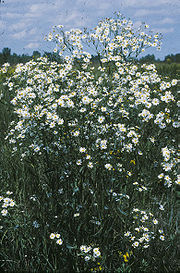Boltonia asteroides var. latisquama: Difference between revisions
Jump to navigation
Jump to search
Created page with '{{Inc| Boltonia latisquama, Gray. Fig. 589. A handsomer plant, with larger and more showy heads with blue-violet rays: involucral bracts oblong or obovate and obtuse (often beari…' |
No edit summary |
||
| (One intermediate revision by one other user not shown) | |||
| Line 1: | Line 1: | ||
{{SPlantbox | |||
|familia=Asteraceae | |||
|genus=Boltonia | |||
|species=asteroides | |||
|cultivar=latisquama | |||
|lifespan=perennial | |||
|features=flowers | |||
|Temp Metric=°F | |||
|jumpin=If this plant info box on watering; zones; height; etc. is mostly empty you can click on the edit tab and fill in the blanks! | |||
|image=Boltonia latisquama.jpg | |||
|image_width=180 | |||
}} | |||
Describe the plant here... | |||
{{Inc| | {{Inc| | ||
Boltonia latisquama, Gray | Boltonia latisquama, Gray. A handsomer plant, with larger and more showy heads with blue-violet rays: involucral bracts oblong or obovate and obtuse (often bearing a minute point); pappus scales small, the awns present and conspicuous. Kan. and Mo. to Ark. Perennial. Var. nana, Hort. A dwarf form scarcely 2-3 ft. tall, with pinkish rayed fls. Branches freely from the base. | ||
}} | }} | ||
==Cultivation== | |||
===Propagation=== | |||
===Pests and diseases=== | |||
==Varieties== | |||
==Gallery== | |||
<gallery perrow=5> | |||
Image:Upload.png| photo 1 | |||
Image:Upload.png| photo 2 | |||
Image:Upload.png| photo 3 | |||
</gallery> | |||
==References== | |||
<references/> | |||
*[[Standard Cyclopedia of Horticulture]], by L. H. Bailey, MacMillan Co., 1963 | |||
<!--- xxxxx *Flora: The Gardener's Bible, by Sean Hogan. Global Book Publishing, 2003. ISBN 0881925381 --> | |||
<!--- xxxxx *American Horticultural Society: A-Z Encyclopedia of Garden Plants, by Christopher Brickell, Judith D. Zuk. 1996. ISBN 0789419432 --> | |||
<!--- xxxxx *Sunset National Garden Book. Sunset Books, Inc., 1997. ISBN 0376038608 --> | |||
==External links== | |||
*{{wplink}} | |||
{{stub}} | |||
__NOTOC__ | |||
Latest revision as of 21:24, 10 February 2010
| Boltonia asteroides subsp. var. latisquama | ||||||||||||||||||||||||||||||||||||||||||||||||||||||||
|---|---|---|---|---|---|---|---|---|---|---|---|---|---|---|---|---|---|---|---|---|---|---|---|---|---|---|---|---|---|---|---|---|---|---|---|---|---|---|---|---|---|---|---|---|---|---|---|---|---|---|---|---|---|---|---|---|

|
|
| ||||||||||||||||||||||||||||||||||||||||||||||||||||||
| ||||||||||||||||||||||||||||||||||||||||||||||||||||||||
Describe the plant here...
| Standard Cyclopedia of Horticulture |
|---|
|
Boltonia latisquama, Gray. A handsomer plant, with larger and more showy heads with blue-violet rays: involucral bracts oblong or obovate and obtuse (often bearing a minute point); pappus scales small, the awns present and conspicuous. Kan. and Mo. to Ark. Perennial. Var. nana, Hort. A dwarf form scarcely 2-3 ft. tall, with pinkish rayed fls. Branches freely from the base.
|
Cultivation
Propagation
Pests and diseases
Varieties
Gallery
-
photo 1
-
photo 2
-
photo 3
References
- Standard Cyclopedia of Horticulture, by L. H. Bailey, MacMillan Co., 1963
External links
- w:Boltonia asteroides var. latisquama. Some of the material on this page may be from Wikipedia, under the Creative Commons license.
- Boltonia asteroides var. latisquama QR Code (Size 50, 100, 200, 500)
